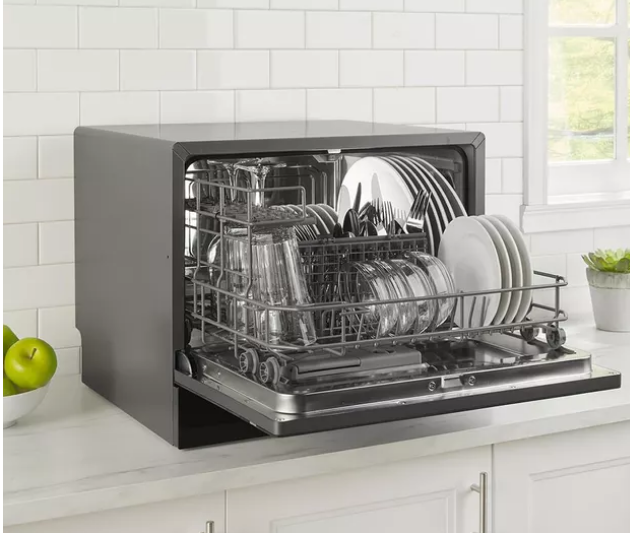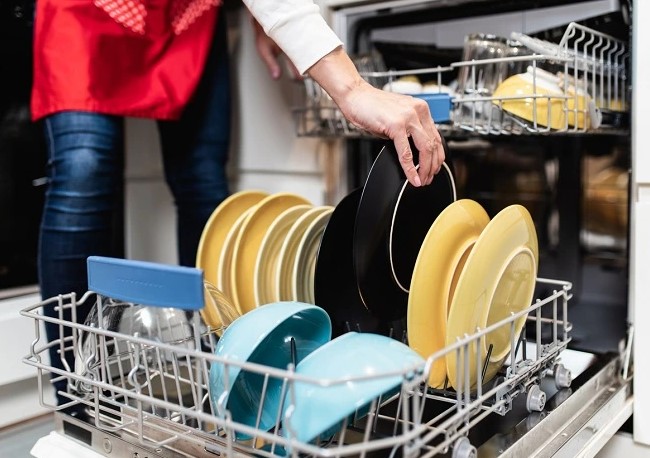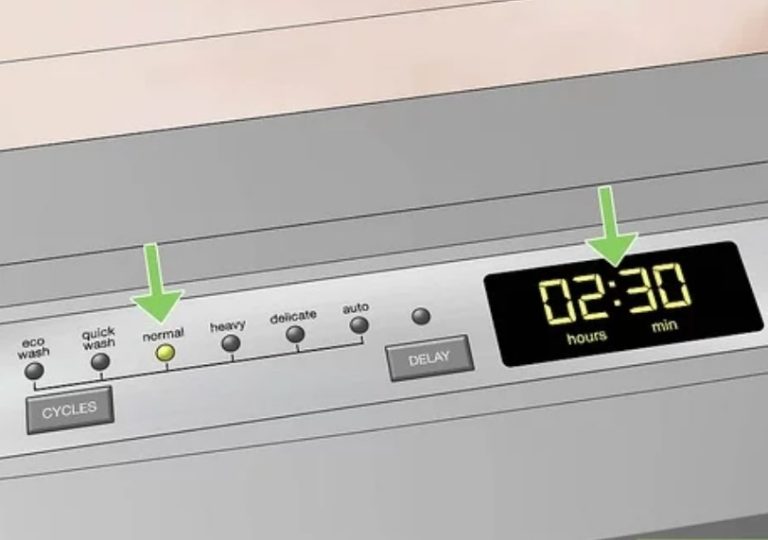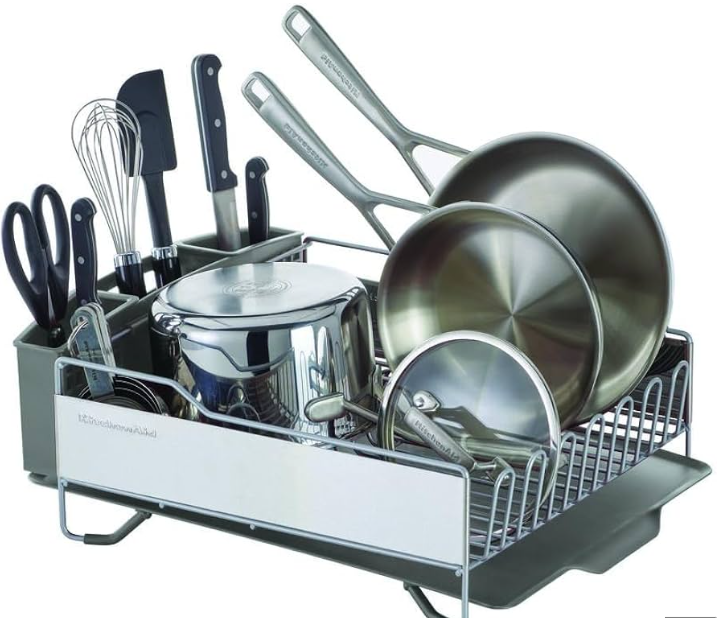Top Factors for Selecting the Perfect Small Dishwasher
Selecting the perfect small dishwasher requires careful consideration of several key factors to ensure optimal performance, efficiency, and satisfaction. The most crucial elements to evaluate include size and capacity, water and energy efficiency, noise level, features and functionality, installation and maintenance requirements, and budget considerations. By thoroughly examining these aspects, consumers can make an informed decision that best suits their specific needs and living situation.
In this comprehensive guide, we will delve into each of these factors, providing detailed insights and practical advice to help you navigate the selection process. We’ll explore the nuances of different dishwasher types, discuss the importance of energy efficiency, and highlight the features that can make a significant difference in your daily life. Additionally, we’ll address installation concerns, maintenance needs, and budgetary considerations to ensure you have all the information necessary to make a confident purchase decision.
Size and Capacity
The size and capacity of a small dishwasher are paramount considerations that directly impact its suitability for your space and needs. Small dishwashers come in various dimensions and capacities, each designed to accommodate different living situations and household sizes.
When evaluating size, it’s crucial to measure the available space in your kitchen or designated area meticulously. Small dishwashers typically fall into three main categories:
1. Compact dishwashers: These units are usually 18 inches wide and can fit in smaller kitchens or apartments.
2. Countertop dishwashers: Designed to sit on a countertop, these models are ideal for extremely limited spaces.
3. Portable dishwashers: These units offer flexibility as they can be moved and stored when not in use.
Capacity, measured in place settings, determines how many dishes the appliance can clean in a single cycle. A place setting typically includes a dinner plate, dessert plate, glass, fork, knife, and spoon. Small dishwashers generally offer capacities ranging from 4 to 8 place settings.
Consider your household size and dishwashing habits when selecting capacity. A single person or couple might find a 4-6 place setting dishwasher sufficient, while a small family may require a 6-8 place setting model to avoid frequent washing cycles.
Water and Energy Efficiency
Water and energy efficiency are critical factors to consider when choosing a small dishwasher, as they significantly impact both environmental sustainability and long-term operating costs. Efficient models consume less water and electricity, resulting in lower utility bills and a reduced carbon footprint.
To identify energy-efficient dishwashers, look for the Energy Star certification. Energy Star certified dishwashers must meet strict efficiency guidelines set by the U.S. Environmental Protection Agency and the Department of Energy. These models typically use 12% less energy and 30% less water than standard dishwashers.
When evaluating water efficiency, consider models with sensors that adjust water usage based on the soil level of dishes. Some advanced small dishwashers can clean a full load using as little as 2 gallons of water, compared to the 27 gallons an average sink-full of dishes requires.
Energy-efficient dishwashers often feature:
– Multiple wash cycles for different load types
– Soil sensors to optimize water and energy use
– High-efficiency motors
– Improved water filtration systems
By choosing an efficient model, you can potentially save hundreds of dollars in energy and water costs over the appliance’s lifetime while contributing to environmental conservation efforts.
Noise Level

The noise level of a small dishwasher is a crucial factor that can significantly impact your daily life, especially in open-plan living spaces or small apartments. Dishwasher noise is measured in decibels (dB), with lower numbers indicating quieter operation.
Modern small dishwashers typically range from 38 dB to 60 dB. To put this into perspective:
– 38-45 dB: Exceptionally quiet, comparable to a library whisper
– 46-50 dB: Very quiet, similar to light rainfall
– 51-55 dB: Moderately quiet, akin to a quiet conversation
– 56-60 dB: Average noise level, comparable to background conversation
When assessing noise levels, consider your living situation and personal preferences. If you have an open-plan kitchen or frequently run the dishwasher at night, opting for a model with a lower decibel rating may be worth the investment.
Manufacturers employ various technologies to reduce dishwasher noise, including:
– Insulation materials to dampen sound
– Multiple spray arms for gentler water distribution
– Quiet motors and pumps
– Soil sensors to optimize wash cycles and reduce unnecessary noise
Remember that while quieter models often come with a higher price tag, the peace and comfort they provide can be invaluable in your daily life.
Features and Functionality
The features and functionality of a small dishwasher can significantly enhance its performance and convenience. When evaluating different models, consider which features align with your specific needs and preferences.
Some popular features to look for include:
1. Adjustable racks: These allow for flexibility in loading different dish sizes and shapes.
2. Third rack: An additional rack for utensils and small items, maximizing space efficiency.
3. Multiple wash cycles: Options like quick wash, heavy duty, and eco-friendly cycles cater to various cleaning needs.
4. Delay start: This feature allows you to set the dishwasher to run at a convenient time, such as during off-peak energy hours.
5. Sanitize option: High-temperature cycles that eliminate bacteria and enhance cleanliness.
6. Smart connectivity: Some models offer Wi-Fi connectivity for remote monitoring and control via smartphone apps.
User-friendly controls and intuitive interfaces are also crucial factors to consider. Look for models with clear, easy-to-read displays and straightforward button layouts. Some dishwashers feature touch controls for a sleek appearance and easy cleaning, while others offer traditional button or dial controls that some users may find more familiar and reliable.
When assessing features, prioritize those that align with your lifestyle and cleaning habits. For instance, if you frequently host dinner parties, a model with a quick wash cycle and adjustable racks might be ideal. Conversely, if energy efficiency is your primary concern, focus on models with eco-friendly cycles and smart sensors.
Installation and Maintenance

The installation process and maintenance requirements of a small dishwasher are important considerations that can impact both initial setup costs and long-term satisfaction with your purchase. Different types of small dishwashers have varying installation needs:
1. Countertop dishwashers: These typically require no permanent installation. They connect to the kitchen faucet and drain into the sink, making them ideal for renters or those seeking a temporary solution.
2. Portable dishwashers: Similar to countertop models, these units can be wheeled to the sink for use and stored away when not needed. They also connect to the faucet and drain into the sink.
3. Compact built-in dishwashers: These require professional installation, including plumbing and electrical connections. While more complex to install, they offer a seamless, integrated look in your kitchen.
Maintenance needs vary depending on the model and usage frequency. Regular maintenance tasks may include:
– Cleaning the filter and spray arms
– Checking and refilling rinse aid
– Inspecting and cleaning door seals
– Running empty cycles with a dishwasher cleaner to remove buildup
When considering maintenance, factor in the availability and cost of replacement parts. Some brands offer more readily available parts and better customer support, which can be crucial for long-term ownership satisfaction.
Warranties are another important aspect to consider. Most small dishwashers come with a standard one-year warranty, but some manufacturers offer extended coverage options. Evaluate the terms and coverage of available warranties, as they can provide peace of mind and potential cost savings on future repairs.
Budget and Brand Reputation
Setting a realistic budget and researching brand reputations are crucial steps in selecting the perfect small dishwasher. Prices for small dishwashers can vary significantly, ranging from around $200 for basic countertop models to over $1000 for high-end compact built-in units.
When determining your budget, consider the following factors:
| Factor | Consideration |
|---|---|
| Initial cost | Purchase price of the dishwasher |
| Installation fees | Professional installation costs (if required) |
| Energy costs | Long-term savings from energy-efficient models |
| Maintenance expenses | Potential repair and part replacement costs |
| Warranty coverage | Value of extended warranties or service plans |
Brand reputation plays a significant role in ensuring product quality and customer satisfaction. When researching brands, consider the following aspects:
1. Customer reviews: Read reviews from verified purchasers to gain insights into real-world performance and reliability.
2. Consumer reports: Consult independent testing organizations for unbiased evaluations of different models.
3. Reliability ratings: Look for data on long-term reliability and common issues associated with specific brands or models.
4. Customer service: Evaluate the quality of customer support offered by different manufacturers.
5. Innovation and technology: Consider brands known for introducing cutting-edge features and improvements in dishwasher technology.
Popular brands in the small dishwasher market include KitchenAid, Bosch, Whirlpool, GE, and Danby, among others. Each brand has its strengths and weaknesses, so it’s essential to research thoroughly and compare models within your budget range.
Remember that while it may be tempting to opt for the cheapest option, investing in a higher-quality dishwasher from a reputable brand can often lead to better performance, increased durability, and greater long-term satisfaction.
In conclusion, selecting the perfect small dishwasher requires careful consideration of multiple factors. By thoroughly evaluating size and capacity, water and energy efficiency, noise level, features and functionality, installation and maintenance requirements, and budget considerations, you can make an informed decision that best suits your needs and preferences. Take the time to research and compare different models, keeping in mind the unique aspects of your living situation and dishwashing habits. With this comprehensive approach, you’ll be well-equipped to choose a small dishwasher that provides excellent performance, convenience, and value for years to come.

Michael Thompson is a highly skilled appliance technician specializing in KitchenAid dishwashers. With many years of experience, Michael is renowned for his expertise in handling various models of KitchenAid dishwashers, ensuring optimal performance and longevity. His dedication to customer satisfaction and in-depth knowledge of appliance technology make him a trusted figure in his community. Michael’s commitment to quality service has earned him a reputation as one of the best in his field.







This article is incredibly helpful for choosing the perfect small dishwasher! The tips on evaluating features like capacity and energy efficiency are spot on. I especially appreciated the advice on fitting the dishwasher into compact spaces. Thanks for the great guidance!
Great guide on selecting a small dishwasher! The detailed breakdown of factors such as size, water consumption, and noise level is very informative. I found the tips on maximizing space and finding energy-efficient models particularly useful. This guide has made my decision-making process much easier.
Great insights on choosing a small dishwasher! I appreciated the focus on size and capacity. Could you share more tips on how to maximize space in a small dishwasher for efficient cleaning?
To maximize space in a small dishwasher, consider the following tips:
Strategic Loading: Place larger items like pots on the sides or back, and smaller items like cups and plates in the middle.
Use Foldable Racks: Adjust or remove racks to accommodate taller items.
Utilize Utensil Holders Efficiently: Place utensils with handles down to save space.
Avoid Overloading: Leave space between items to ensure water circulation.
These tips should help you achieve efficient cleaning in a compact dishwasher.
Can you elaborate on the energy efficiency ratings for small dishwashers? How important is this factor compared to other features mentioned in your guide?
Hi Robert,
Thank you for your question! Energy efficiency ratings are indeed a crucial factor when choosing a small dishwasher. These ratings reflect how much energy the dishwasher uses during its operation, and a higher rating typically means lower energy consumption. This can lead to significant savings on your utility bills over time.
Compared to other features, energy efficiency can be quite important because it not only impacts your running costs but also contributes to environmental conservation. However, it should be considered alongside other features such as size, cleaning performance, noise levels, and additional functionalities. The right balance depends on your specific needs and preferences.
If you have any more questions or need further details, feel free to ask!
Best,
Thanks for the detailed guide! I’m curious about the different wash cycles available. Which cycles are essential for a small dishwasher to cover most cleaning needs?
Your article was very helpful in understanding what to look for in a small dishwasher. What are some specific features that can make a small dishwasher more versatile?